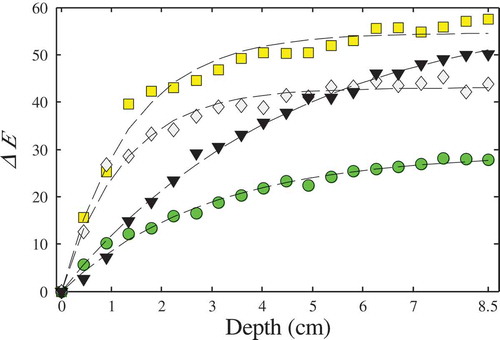Figures & data
Figure 2. Image of the apple juice sample opened in the GUI. The 20 patches selected to measure colour versus depth are shown; the initial and final patches are indicated. Predicted RGB colours of these patches are also depicted.
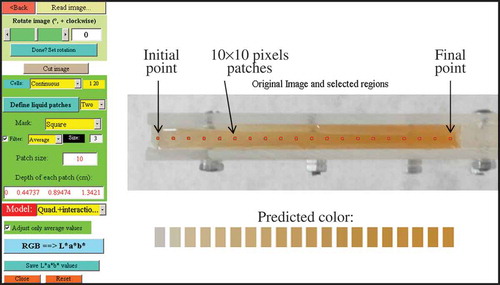
Table 1. L*a*b* colour values obtained from image processing and from spectrophotometer measurements.
Figure 3. Colour variation versus depth for apple juice sample. Symbols: (![]()
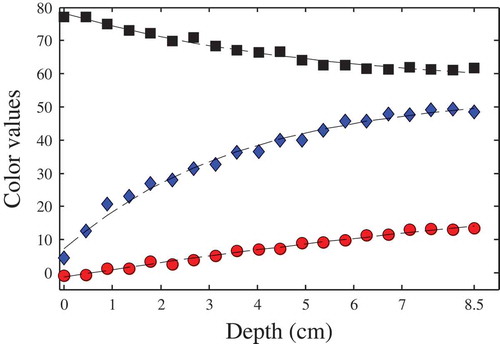
Table 2. Colour appearance obtained from image processing (colour at infinite depth) and spectrophotometer (1 cm cell) measurements for some selected samples. Also a picture of the sample into a test tube is shown, using 10 cm liquid depth and a white background.
Figure 4. Characteristic colour of the multi-fruit juice sample, at different concentrations. Symbols: (![]()
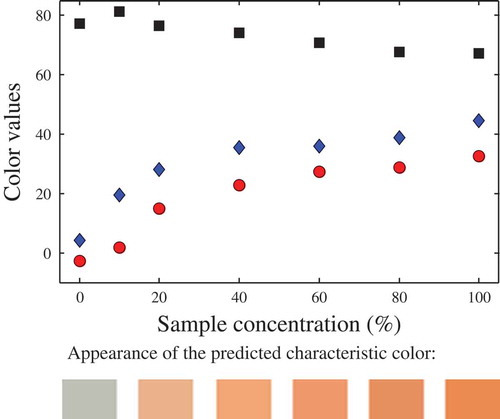
Figure 5. Characteristic colour of the blue energy drink, at different concentrations. Symbols: (![]()
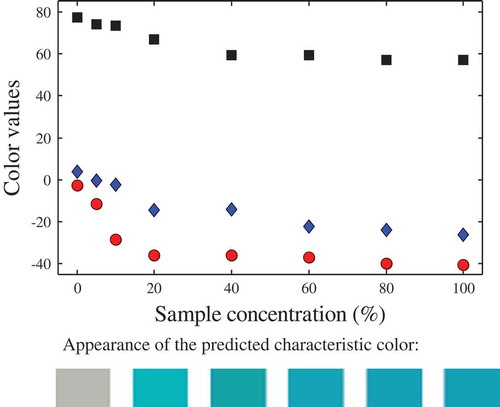
Table 3. Characteristic colour predicted using different background, for cool blue energy drink sample.
Figure 6. Effect of the background colour on liquid colour prediction. a) L*; b) a*; c) b*. Background colour: (![]()

Figure 7. Predicted colour variation with depth for the blue energy drink sample, using different background colours.
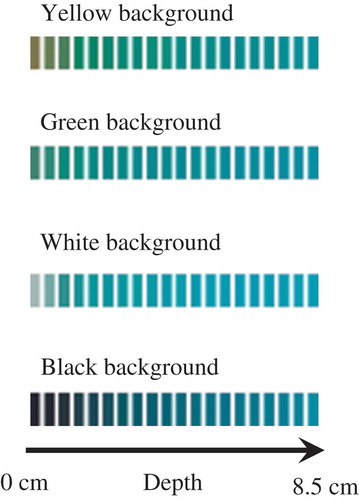
Figure 8. Total colour difference ΔE versus depth for different background colours: (![]()
